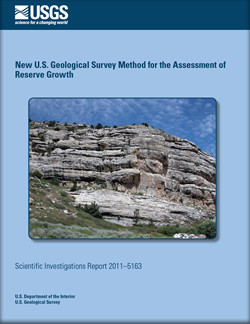 Abstract Abstract
Reserve growth is defined as the estimated increases in quantities of crude oil, natural gas, and natural gas liquids that have the potential to be added to remaining reserves in discovered accumulations through extension, revision, improved recovery efficiency, and additions of new pools or reservoirs. A new U.S. Geological Survey method was developed to assess the reserve-growth potential of technically recoverable crude oil and natural gas to be added to reserves under proven technology currently in practice within the trend or play, or which reasonably can be extrapolated from geologically similar trends or plays. This method currently is in use to assess potential additions to reserves in discovered fields of the United States. The new approach involves (1) individual analysis of selected large accumulations that contribute most to reserve growth, and (2) conventional statistical modeling of reserve growth in remaining accumulations. This report will focus on the individual accumulation analysis.
In the past, the U.S. Geological Survey estimated reserve growth by statistical methods using historical recoverable-quantity data. Those statistical methods were based on growth rates averaged by the number of years since accumulation discovery. Accumulations in mature petroleum provinces with volumetrically significant reserve growth, however, bias statistical models of the data; therefore, accumulations with significant reserve growth are best analyzed separately from those with less significant reserve growth. Large (greater than 500 million barrels) and older (with respect to year of discovery) oil accumulations increase in size at greater rates late in their development history in contrast to more recently discovered accumulations that achieve most growth early in their development history. Such differences greatly affect the statistical methods commonly used to forecast reserve growth.
The individual accumulation-analysis method involves estimating the in-place petroleum quantity and its uncertainty, as well as the estimated (forecasted) recoverability and its respective uncertainty. These variables are assigned probabilistic distributions and are combined statistically to provide probabilistic estimates of ultimate recoverable quantities. Cumulative production and remaining reserves are then subtracted from the estimated ultimate recoverable quantities to provide potential reserve growth. In practice, results of the two methods are aggregated to various scales, the highest of which includes an entire country or the world total. The aggregated results are reported along with the statistically appropriate uncertainties.
|
First posted November 8, 2011
This report is presented in Portable Document Format (PDF); the latest version of Adobe Reader or similar software is required to view it. Download the latest version of Adobe Reader, free of charge. |